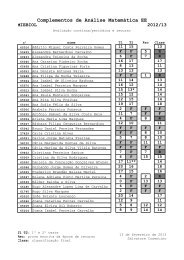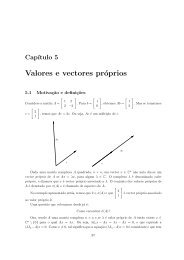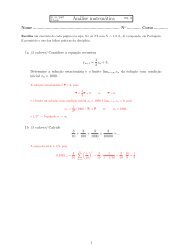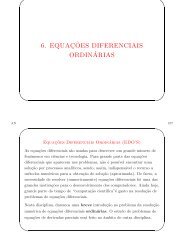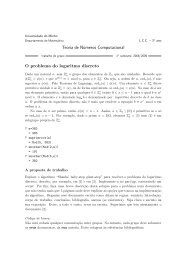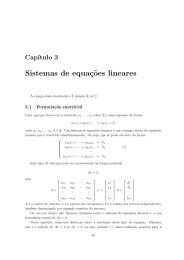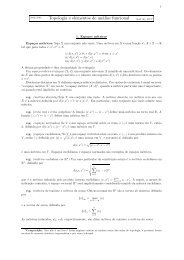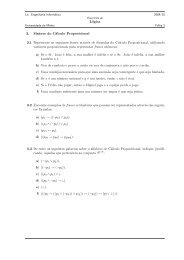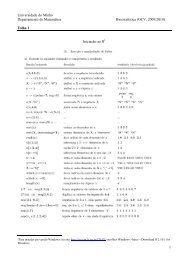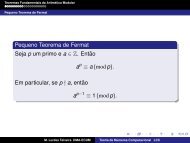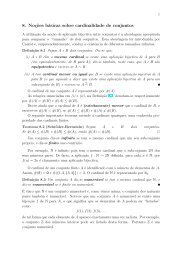My title - Departamento de Matemática da Universidade do Minho
My title - Departamento de Matemática da Universidade do Minho
My title - Departamento de Matemática da Universidade do Minho
Create successful ePaper yourself
Turn your PDF publications into a flip-book with our unique Google optimized e-Paper software.
7 OSCILLATIONS AND CYCLES 54<br />
Observe that if one of the bodies is much bigger than the other (like the Sun and the Earth), say<br />
m 1 ≫ m 2 , then the center of mass nearly coinci<strong>de</strong>s with the position q 1 of the bigger body, while<br />
the reduced mass m is essentially the mass m 2 of the smaller one (hence it looks like the Earth<br />
moving around the Sun, as Galileo had suggested).<br />
Central forces.<br />
Consi<strong>de</strong>r the Newton equation<br />
m¨r = F (|r|) ˆr<br />
<strong>de</strong>scribing the motion of a particle (planet) of mass m in a central force field F . Conservation<br />
of angular momentum implies that the motion is planar, hence we may take r ∈ R 2 . In polar<br />
coordinates r = ρe iθ , the equations reed<br />
¨ρ − ρ ˙θ 2 = F (ρ)/m<br />
ρ¨θ + 2 ˙ρ ˙θ = 0 .<br />
The second equation says that the “areal velocity” (“veloci<strong>da</strong><strong>de</strong> areal”) l = ρ 2 ˙θ is a constant of<br />
the motion (Kepler’s second law).<br />
Taking Newton’s gravitational force F (ρ) = − GmM<br />
ρ<br />
(where M is the mass of the Sun and G is<br />
2<br />
the gravitational constant), the first equation may be written as<br />
m¨ρ = − ∂ ∂ρ V l (ρ) ,<br />
where we <strong>de</strong>fined the ”effective potential energy” as V l (ρ) = 1 2 m l2<br />
ρ<br />
− G mM 2 ρ<br />
is<br />
E = 1 2 m ˙ρ2 + 1 2 m l2<br />
ρ 2 − GmM ρ .<br />
. The conserved energy<br />
Kepler’s effective potential and some energy level sets.<br />
Now we set ρ = 1/x and look for a differential equation for x as a function of θ. Computation<br />
shows that dx/dθ = − ˙ρ/l, and, using conservation of l, that d 2 x/dθ 2 = −ρ 2 ¨ρ/l 2 . There follows<br />
that the first Newton equation reads<br />
we get<br />
d 2 x<br />
dθ 2 + x = − 1<br />
l 2 x 2 m F (1/x) .<br />
d 2 x<br />
dθ 2 + x = −GM l 2 .



